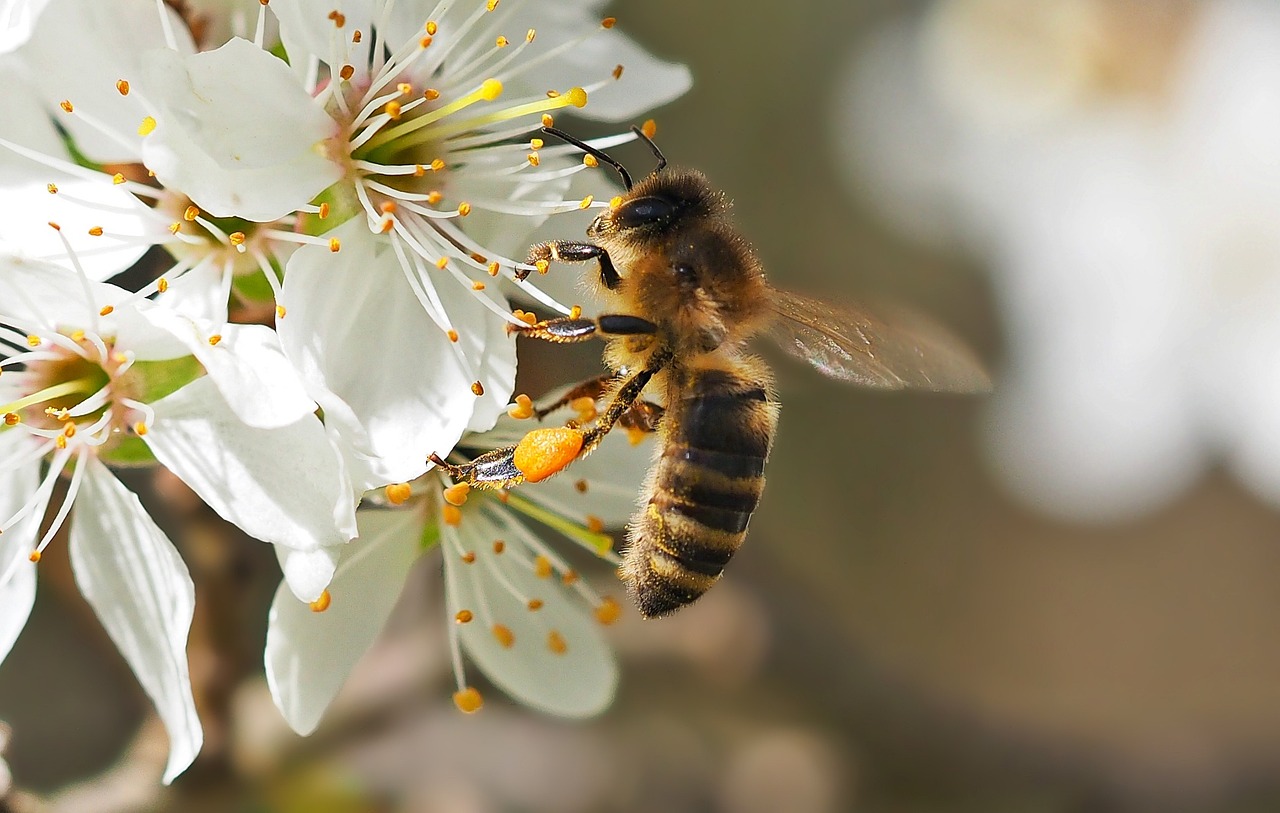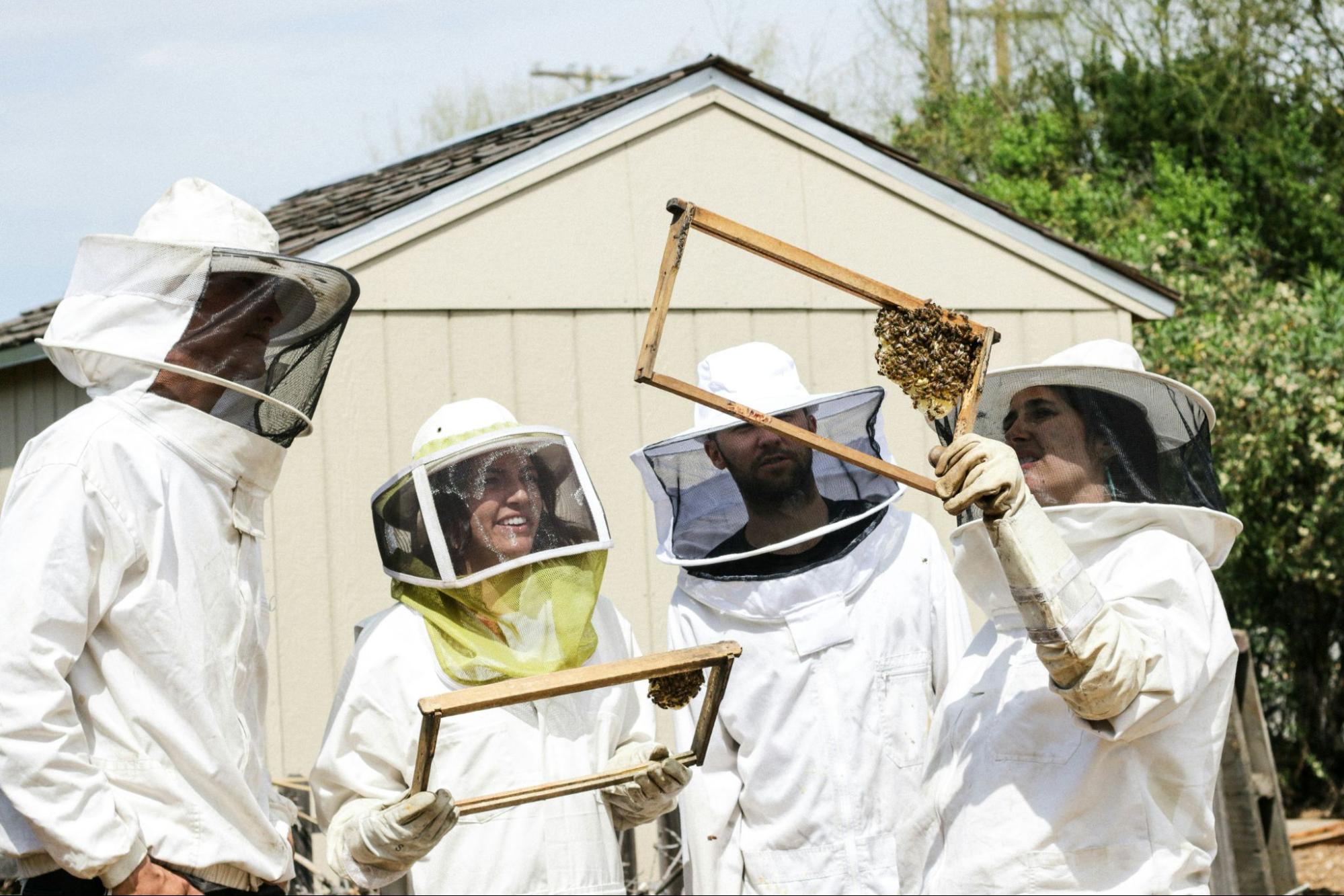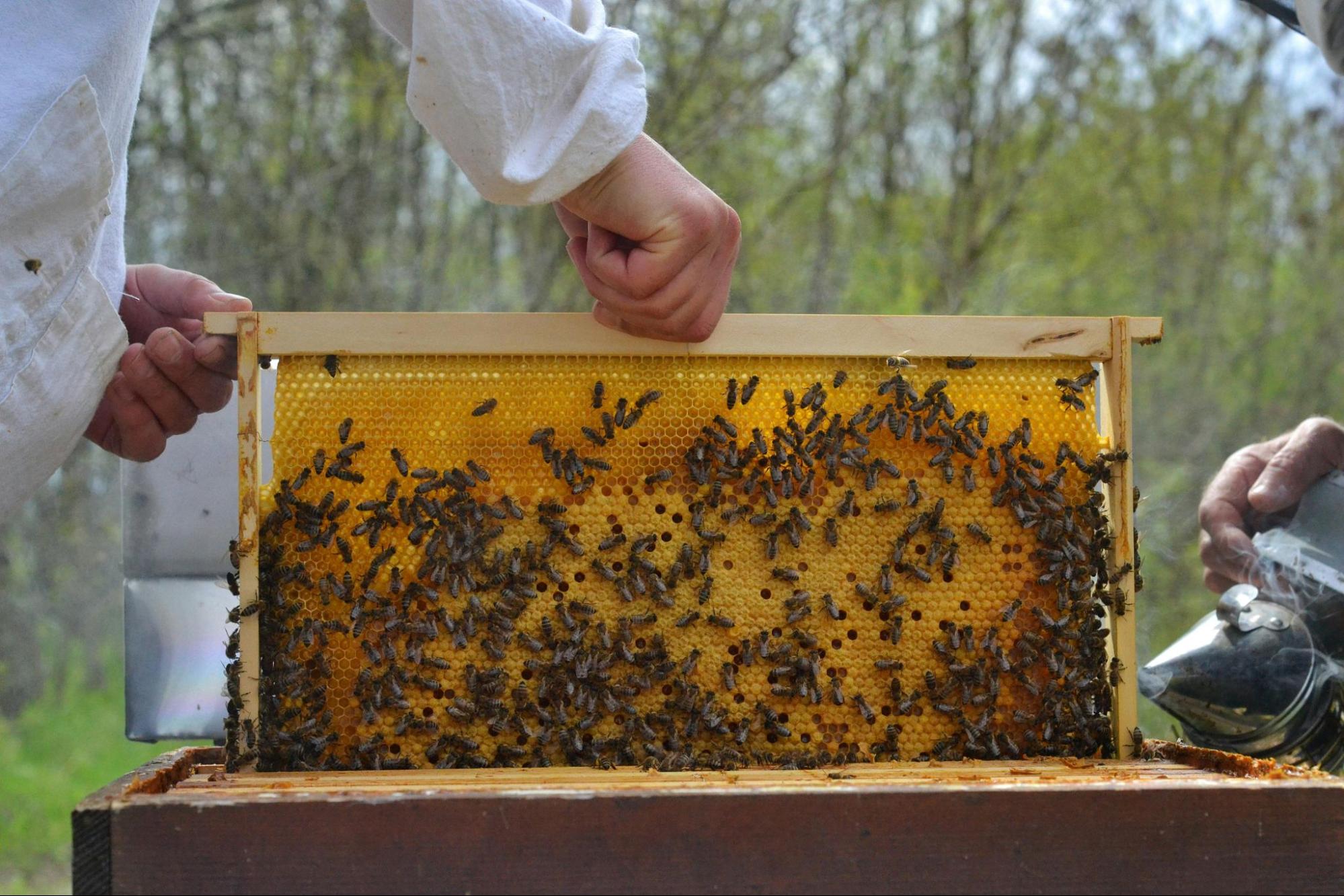Spring Beekeeping: Preparing Your Hives for a Productive Season
As the cold grip of winter loosens, beekeepers are presented with the critical task of preparing their hives for the spring. This transitional period is crucial in setting the stage for a successful honey crop and ensuring the health and productivity of the bee colony.
In this blog, we delve into the essential steps for spring beekeeping, drawing from our experiences and a recent tutorial that emphasized the importance of early spring management.
Step 1: Removing Winter Protections
One of the first tasks as the weather warms is to remove any winter protections, such as mouse guards. These are no longer necessary as honey bees start to fly out at least once a week, and the risk from mice diminishes. This is also an opportune time to perform a preliminary check on the hive to ensure that the bees have enough feed throughout the winter.
Step 2: Inspection for Health and Resources
Early spring is an ideal time to inspect the hive for the following key factors:
- Queen health. Ensure there's a healthy, productive queen present.
- Disease check. Look for any signs of disease within the hive.
- Food stores. Confirm that there's enough feed left for the bees, especially if the weather turns cold again.
During these inspections, assess the brood pattern and the presence of pollen and nectar, as these are indicators of a healthy foraging and breeding colony.

Step 3: Promote Bee-Friendly Gardening
Consider the environment around your hives. Encourage the planting of bee-friendly flora in your area. Collaborate with local gardening clubs or community groups to promote the planting of native flowers, shrubs, and trees that provide bees with nectar and pollen throughout the season.
This not only supports your bees but also enhances the local ecosystem, contributing to the health of all pollinators. The table below shows which plants can provide the most benefit during the spring, helping you plan a garden that supports healthy bee populations.
| Plant Name | Bloom Period | Benefits to Bees |
| Dandelion | Early spring | Early nectar/pollen source, supports colony strengthening |
| Apple Blossom | Mid to late spring | Rich in pollen, essential for brood rearing |
| Clover | Late spring | High nectar yield, excellent for honey production |
Step 4: Feeding Bees in Spring
Spring can be unpredictable, with fluctuating temperatures impacting the bees' ability to forage. Using pollen patties is a simple way to ensure your bees will have the nutrition they need to start spring off strong.
Internal feeders can help mitigate a decline in hive health, as they provide a consistent source of syrup. Unlike external or top feeders, which can leak and harm the colony during temperature swings, internal feeders carry no such risks.
Early spring feeding is not just about preventing starvation; it's supporting the growth of a new brood, which is essential for the colony's expansion and health.
Step 5: Brood Management and Swarm Prevention
As the colony grows, beekeepers must be vigilant about space and resources to prevent swarming, a natural phenomenon where bees leave their hive to start a new colony. This is particularly important for strong colonies with abundant food stores, as they are more likely to swarm.
Early spring inspections help beekeepers plan for potential splits or other management practices. These practices help control the colony's size and encourage healthy growth, preventing the loss of bees from swarming.
| Hive Tip: Regularly check for adequate ventilation in your hives. Good airflow prevents overheating and reduces swarming impulses. |
Step 6: Making Notes and Planning
A good beekeeper is an observant and proactive planner. Keeping detailed notes on each inspection helps in making informed decisions tailored to each hive's specific needs. Whether it's deciding when to add pollen patties, how to adjust feeding, or planning for splits, detailed records are invaluable for successful beekeeping.

Step 7: Community Education and Collaboration
Consider the broader impact of your beekeeping. Engage with your local community to raise awareness about the importance of bees. Host workshops, school visits, or open days at your apiary to educate people about beekeeping and the vital role bees play in our ecosystem.
Collaborating with local environmental groups, schools, and community gardens can amplify the positive impact of your beekeeping practice.
Understanding Bee Behavior in Spring
As the chill of winter recedes and the warmth of spring begins to stir the natural world into activity, beekeepers are presented with the vital task of understanding and responding to the changing behaviors of their bees.
Spring brings a period of rapid growth and activity within the hive, and a beekeeper's ability to interpret and adapt to these behaviors is crucial for a productive season.
Reawakening and Expansion
With the arrival of spring, bees emerge from their winter clusters, where they have been conserving warmth and energy. This reawakening is marked by increased foraging activity as bees seek out early-blooming flowers to replenish their stores of nectar and pollen.
- Increased foraging. Worker bees, driven by the warmer temperatures and longer daylight hours, begin to forage for new sources of nectar and pollen.
- Queen's egg laying. The queen bee, sensing the change in season and the availability of resources, increases her rate of egg-laying, preparing for the expansion of the colony.
Pollination and Hive Growth
The season is also a critical time for pollination. As bees flit from flower to flower, they not only collect vital nutrients but also fulfill their role as key players in the pollination process, which is crucial for both the ecosystem and agriculture.
The bounty of nectar and pollen gathered during these forays feeds the developing brood, fueling a swift increase in the hive population. Beekeepers need to ensure the hive's structure can accommodate this burgeoning growth.
| Pollinator Fact: A single bee can visit up to 5,000 flowers in a day, making them super pollinators of our ecosystem. |
Defensive Behaviors
As hives become more active and populous, bees may exhibit increased defensive behaviors to protect their home and resources. Beekeepers should exercise caution during inspections and when handling hives to minimize disturbances and avoid triggering defensive responses.
The protective nature of honey bees during this season can manifest in several ways:
- Guard bees. The entrance of the hive sees an increase in the number of guard bees. These bees are responsible for scrutinizing incoming bees and repelling invaders. Their presence is a first line of defense against pests and other threats.
- Alertness to disturbance. Bees become highly sensitive to vibrations, loud noises, and rapid movements near the hive. Such disturbances can trigger a defensive response, as bees perceive them as potential threats to the colony's safety.
- Pheromone communication. When a bee stings, it releases an alarm pheromone that signals other bees to the threat's location, often leading to a concerted defensive effort by the colony. This chemical communication is a critical aspect of the hive's collective defense strategy.
To manage honey bees' springtime defensive behaviors, beekeepers should move slowly and calmly, use smoke to calm bees and mask alarm pheromones, wear protective gear to prevent stings, and maintain a regular inspection schedule.
| Safety Tip: Use light-colored clothing when working with your bees. Dark colors can provoke bees, as they resemble their natural predators. |

FAQs on Spring Beekeeping
As beekeepers prepare their hives for the bustling activity of spring, many questions arise about best practices and strategies for ensuring the health and productivity of their colonies. Below are some frequently asked questions that provide answers to common queries.
What are some common bee species that benefit from spring beekeeping practices?
Spring beekeeping practices benefit a variety of bee species, including honey bees, solitary bees, and mining bees. These practices help ensure that these bees have the resources they need to thrive and contribute to pollination.
How do bees survive during the early days of spring when food sources are scarce?
Bees survive the early spring by utilizing stored honey from the previous year. Beekeepers can also provide supplemental feed, such as sugar syrup, to support the colony until natural food sources become abundant.
Can you use beet sugar to make sugar syrup for feeding bees in spring?
Yes, beet sugar can be used to make sugar syrup for feeding bees in spring. It’s a suitable alternative to cane sugar and provides essential carbohydrates that bees need for energy.
What are the benefits of using double jar feeders for spring feeding?
Double jar feeders offer a reliable method for providing bees with sugar syrup in the spring. They allow for easy refilling and help reduce the risk of drowning, ensuring bees have access to necessary feed without harm.
How can extra honey frames from last season be utilized in spring beekeeping?
Extra honey frames from the previous season can be given back to the bees in spring as a form of supplemental feed. This helps sustain the colony, especially during periods when natural food sources are not yet abundant.
What considerations should be made when introducing packaged bees to new colonies in spring?
Ensure they have immediate access to food sources. It's also beneficial to add a few drops of essential oils to the syrup to help promote hive health and ease the integration process.
Conclusion
Spring beekeeping sets the foundation for the year's productivity and the health of your bee colonies. From the initial removal of winter protections to detailed inspections and proactive management practices, each step is critical.
By ensuring that your bees are healthy, well-fed, and adequately housed, you're not just preventing problems like swarming or disease; you're also maximizing the potential for a bountiful honey harvest.
Remember, the effort you put in during the early spring can significantly impact the success of your beekeeping season. So, as the bees start to fly and the flowers begin to bloom, make sure you're ready to support your hives into a productive and prosperous year.

